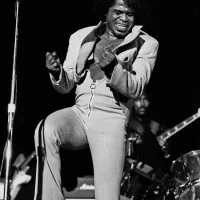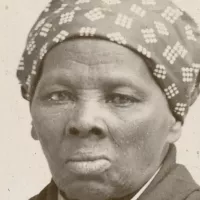Blues is a music genre originating from African-Americans in the Deep South around the 1860s. It integrates spirituals, work songs, and narrative ballads from African-American culture. A key element in jazz, rhythm and blues, and rock and roll, blues is characterized by call-and-response patterns, the blues scale, and chord progressions like the twelve-bar blues. Blue notes (flattened thirds, fifths, or sevenths) are essential, and blues shuffles or walking bass create a repetitive rhythm known as the groove.
1901: Blues Music Reported in Southern Texas
Around 1901, Gate Thomas reported similar blues songs in southern Texas, contributing to the early documentation of blues music in the region.
1902: Blues Music Reported in New Orleans and Missouri
In 1902, Jelly Roll Morton recalled first hearing blues music in New Orleans, and Ma Rainey remembered first hearing the blues in the same year in Missouri, contributing to the early documentation of blues music in the region.
1903: W.C. Handy Hears the Blues
In 1903, W.C. Handy first heard the blues in Tutwiler, Mississippi, marking his introduction to the genre that would significantly influence his career.
1905: Extensive Research in Folk Songs
Between 1905 and 1908, Howard W. Odum performed extensive research, publishing an anthology of folk songs from Lafayette County, Mississippi, and Newton County, Georgia.
1908: Publication of Folk Songs Anthology
Between 1905 and 1908, Howard W. Odum published an anthology of folk songs from Lafayette County, Mississippi, and Newton County, Georgia, marking early academic interest in and documentation of folk music.
1908: First Publication of Blues Sheet Music
In 1908, the first publication of blues sheet music occurred, marking a significant step in the evolution of blues music from oral traditions to a more formalized and accessible form.
1912: Tin Pan Alley Adoption of Blues Elements
By 1912, the sheet music industry had published three popular blues-like compositions: "Baby Seals' Blues", "Dallas Blues", and "The Memphis Blues". This event precipitated the Tin Pan Alley adoption of blues elements.
1912: Dallas Blues Published
In 1912, "Dallas Blues" was published and is one of the first published blues songs exhibiting the "AAB" pattern. This structure consists of a line sung over the first four bars, its repetition over the next four, and a longer concluding line over the last bars.
1912: Dallas Blues and The Memphis Blues Published
In 1912, Hart Wand's "Dallas Blues" was published, followed by W.C. Handy's "The Memphis Blues" in the same year. These publications were pivotal in the early popularization and formalization of blues music.
1914: Saint Louis Blues Published
In 1914, "Saint Louis Blues" was published as one of the first blues songs exhibiting the "AAB" pattern. This structure consists of a line sung over the first four bars, its repetition over the next four, and a longer concluding line over the last bars.
1920: Crazy Blues Recording
In 1920, Mamie Smith's rendition of Perry Bradford's "Crazy Blues" became the first recording by an African American singer, marking a breakthrough in the commercial availability and recognition of blues music.
1920: Mamie Smith Records Crazy Blues
In 1920, Mamie Smith, a vaudeville performer, became the first African American to record a blues song. Her second record, "Crazy Blues", sold 75,000 copies in its first month, marking a significant commercial success for blues music.
1920: Blues Music before 1920
In 1920, a record of blues music can be found in the recordings of artists such as Lead Belly and Henry Thomas. These sources show the existence of many different structures distinct from twelve-, eight-, or sixteen-bar.
1920: Lucille Hegamin Records The Jazz Me Blues
In 1920, the vaudeville singer Lucille Hegamin became the second black woman to record blues when she recorded "The Jazz Me Blues", contributing to the early presence of female voices in recorded blues music.
1923: First Slide Guitar Recording
In 1923, Kentucky-born Sylvester Weaver was the first to record the slide guitar style. The slide guitar then became an important part of the Delta blues.
1924: Recordings by Lawrence Gellert
In 1924, recordings were made by Lawrence Gellert, contributing to the documentation of blues music during this period.
1926: Victoria Spivey's Recording Career Begins
In 1926, Victoria Spivey, also known as Queen Victoria or Za Zu Girl, began a recording career that spanned forty years, marking a significant contribution to the blues genre.
1927: Rising High Water Blues
In 1927, Blind Lemon Jefferson's "Rising High Water Blues" was released, telling of the Great Mississippi Flood of 1927.
1928: It's Tight Like That
In 1928, Tampa Red and Georgia Tom released "It's Tight Like That", a Hokum blues song celebrated for its comedic lyrical content and a boisterous, farcical performance style. It features a sly wordplay with the double meaning of being "tight" with someone, coupled with a more salacious physical familiarity.
1948: Muddy Waters' First Success
From 1948 on, Chicago became a center for electric blues after Muddy Waters recorded his first success, "I Can't Be Satisfied". This event marked a pivotal moment in the development and popularization of electric blues in Chicago.
1949: Boogie Chillen Reaches Number 1
In 1949, John Lee Hooker's first hit, "Boogie Chillen", reached number 1 on the R&B charts, marking a significant milestone in his career and the popularization of his unique blues style.
1954: Elvis Presley Discovered by Sun Records
In 1954, Sam Phillips discovered Elvis Presley, leading the Sun label to shift its focus to the rapidly expanding white audience and primarily record rock 'n' roll.
1958: Muddy Waters Tour in England
In 1958, Muddy Waters' tour in England significantly influenced local musicians such as Alexis Korner and Cyril Davies, who began to emulate his louder, electric style, ultimately inspiring the British Invasion of bands like the Rolling Stones and the Yardbirds.
1963: Publication of "Blues People: The Negro Music in White America"
In 1963, Amiri Baraka, who was known as LeRoi Jones at the time, published "Blues People: The Negro Music in White America", which was the first book about the social history of the blues.
1971: Endless Boogie Album Release
In 1971, John Lee Hooker blended his blues style with rock elements on the album Endless Boogie, creating a unique musical style by playing with younger white musicians. The album showcases his innovative approach to blues music.
1972: Release of the film "Sounder"
In 1972, the critically acclaimed film "Sounder" was released, prominently featuring music written and performed by acoustic blues artist Taj Mahal and Texas bluesman Lightnin' Hopkins. Mahal received a Grammy nomination for Best Original Score Written for a Motion Picture and a BAFTA nomination.
1980: Release of "The Blues Brothers" film
In 1980, Dan Aykroyd and John Belushi released the film "The Blues Brothers", which featured many of the biggest living influencers of the rhythm and blues genre, such as Ray Charles, James Brown, Cab Calloway, Aretha Franklin, and John Lee Hooker. The band also began a successful tour.
1982: Release of Z.Z. Hill's "Down Home Blues"
In 1982, Z.Z. Hill's recording "Down Home Blues" was released on the Jackson-based Malaco label, unexpectedly contributing to the resurgence of interest in the blues among the African-American population.
1983: Release of Stevie Ray Vaughan's "Texas Flood"
In 1983, Stevie Ray Vaughan's recording "Texas Flood" was released, launching the Texas-based guitarist onto the international stage.
1984: Release of Little Milton's "The Blues is Alright"
In 1984, Little Milton's recording "The Blues is Alright" was released on the Jackson-based Malaco label, unexpectedly contributing to the resurgence of interest in the blues among the African-American population.
1986: Robert Cray's Album "Strong Persuader" Announced Him As A Major Blues Artist
In 1986, Robert Cray's album "Strong Persuader" was released, establishing him as a major blues artist.
1989: Release of John Lee Hooker's "The Healer"
In 1989, John Lee Hooker's popularity was revived with the release of the album "The Healer".
1998: Release of "Blues Brothers 2000"
In 1998, the sequel to the Blues Brothers, "Blues Brothers 2000", was released, featuring a much larger number of blues artists such as B.B. King, Bo Diddley, Erykah Badu, Eric Clapton, Steve Winwood, Charlie Musselwhite, Blues Traveler, Jimmie Vaughan, and Jeff Baxter.
2000: Release of "Blues Brothers 2000"
In 2000, the sequel to the Blues Brothers, "Blues Brothers 2000", was released, featuring a much larger number of blues artists such as B.B. King, Bo Diddley, Erykah Badu, Eric Clapton, Steve Winwood, Charlie Musselwhite, Blues Traveler, Jimmie Vaughan, and Jeff Baxter.
2001: Release of the film "Songcatcher"
In 2001, Taj Mahal wrote blues for and performed a banjo composition, claw-hammer style, in the movie release "Songcatcher", which focused on the story of the preservation of the roots music of Appalachia.
2003: Martin Scorsese Promotes the Blues to a Larger Audience
In 2003, Martin Scorsese made significant efforts to promote the blues to a larger audience by asking famous directors such as Clint Eastwood and Wim Wenders to participate in a series of documentary films for PBS called "The Blues". He also participated in the rendition of compilations of major blues artists in a series of high-quality CDs.
2006: Keb' Mo' Performs Blues Rendition of "America, the Beautiful"
In 2006, blues guitarist and vocalist Keb' Mo' performed his blues rendition of "America, the Beautiful" to close out the final season of the television series "The West Wing".
2012: "Red, White and Blues" Performance at the White House
In 2012, episode 1 of "In Performance at the White House", entitled "Red, White and Blues" was hosted by Barack and Michelle Obama. The show featured performances by B.B. King, Buddy Guy, Gary Clark Jr., Jeff Beck, Derek Trucks, and Keb Mo, among others.
2017: Publication of "Beyond the Crossroads: The Devil & The Blues Tradition"
In 2017, a study of the devil's role in the blues was published, called "Beyond the Crossroads: The Devil & The Blues Tradition".
Mentioned in this timeline

Michelle Obama is an American attorney author and former First...

James Brown an iconic American singer songwriter dancer and musician...

The White House located at Pennsylvania Avenue NW in Washington...

Elvis Presley the King of Rock and Roll was a...

Clint Eastwood is an iconic American actor and film director...

Erykah Badu born Erica Abi Wright is a renowned American...
Trending
Jo'Quavious Dequane Woody Marks is an American professional football running back for the Houston Texans of the NFL He played...

8 months ago Nick Chubb declares he's just getting started amidst free agency, addressing future plans.

2 months ago Jon Hamm: From Mad Men to a Beloved Actor

1 month ago Saints WR Shaheed Trade Rumors Swirl Amid Olave Interest Before NFL Deadline.

6 months ago Trump's White House Rose Garden Paving Sparks Controversy After Melania's Redesign; Bulldozing Begins.
4 months ago Jack Bech Impresses at Raiders Training Camp, Showcasing Skill Set and Potential Impact.
Popular
Matt and Ross Duffer known as the Duffer Brothers are...
Aftyn Alyssa Behn is an American politician currently serving as...

Candace Owens is an American conservative political commentator and author...

XXXTentacion born Jahseh Dwayne Ricardo Onfroy was a controversial yet...

Ilhan Omar is an American politician currently serving as the...

Harriet Tubman was a pivotal American abolitionist and social activist...

